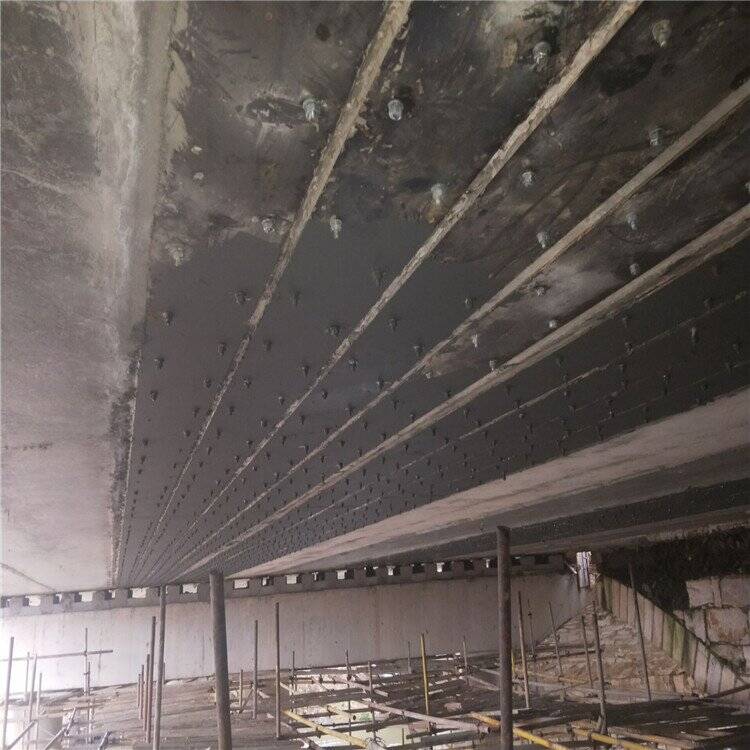Highway Bridge Maintenance
Bonded Steel Reinforcement
To sum up, the external bonding steel reinforcement technology is one of the most common maintenance and reinforcement measures for highway bridges.

Since its opening to traffic in 2017, under the combined effects of heavy traffic and water damage, the bridge deck began to suffer from cracks and diseases. The results of the routine survey in 2020 show that the existing cracks are roughly divided into three categories: reflection cracks, network cracks, and slurry cracks. Pumping cracks are mostly accompanied by diseases such as passage, collapse, loosening and peeling of the bridge deck. In order to ensure the smooth performance of the bridge road performance and prolong its service life, it is decided to deal with it in time. Considering the large traffic volume and heavy-duty vehicles of this bridge section, rapid crack treatment technology must be adopted in order to restore its road function in the shortest time and ensure driving safety.
The external bonding steel reinforcement technology of bridge structures mainly uses building structural adhesives and other adhesives to paste steel plates to the parts to be reinforced to improve the structural bearing capacity. The construction process of this technology is simple. It only needs to treat the surface of the component to be reinforced according to the design requirements, and firmly bond the steel plate to it through the building structural adhesive to form a joint bearing system of the steel plate and the original component. The reinforcement construction can not interrupt the traffic. After the steel is reinforced, a stable stress system can be formed for 3 days, which is very suitable for the emergency reinforcement of highway bridges. The thickness of the bonded steel is generally 2 to 6 mm, and the weight of the bridge structure will not increase significantly after reinforcement, and it will not affect the aesthetics of the bridge. Bonded steel reinforcement can not only improve the bearing capacity of the original bridge structure, but also effectively prevent the expansion of cracks in the original bridge concrete structure, and the overall bearing capacity of the bridge is significantly improved.
Apply the glue on the treated concrete and steel plate surface with a spatula, and scrape it back and forth, so that the glue can fully penetrate, infiltrate, diffuse and adhere to the joint surface. The height of the glue distribution should be 1-3mm, and the middle thick and the two sides thin. In order to prevent the glue from flowing, a layer of dewaxed glass cloth should be added on it, and then the steel plate should be pasted on the design position. After the steel plate is pasted, it should be manually tapped along the pasting surface. If there is no hollow sound, it means that the paste density has reached the design requirements. Otherwise, the steel plate should be removed and glued again.
A special U-shaped fixture is used to clamp the pasted steel plate, and the pressure is controlled at 0.05-0.1MPa. If the permanent additional anchoring measures of expansion bolts are used, the embedded holes should be drilled before the steel plate is coated with glue. The curing temperature of the building structural adhesive should be at least 20°C. After curing for 24 hours, the fixtures and supports should be removed. If the ambient temperature is below 20°C, artificial heating methods such as infrared should be used.
To sum up, the external bonding steel reinforcement technology is one of the most common maintenance and reinforcement measures for highway bridges. During the construction process, the quality control should be strengthened from the surface treatment, unloading, glue distribution, steel plate paste and colloid curing, paste compactness inspection and anti-corrosion of the existing concrete member joint surface and steel plate joint surface to ensure the expected reinforcement effect. .